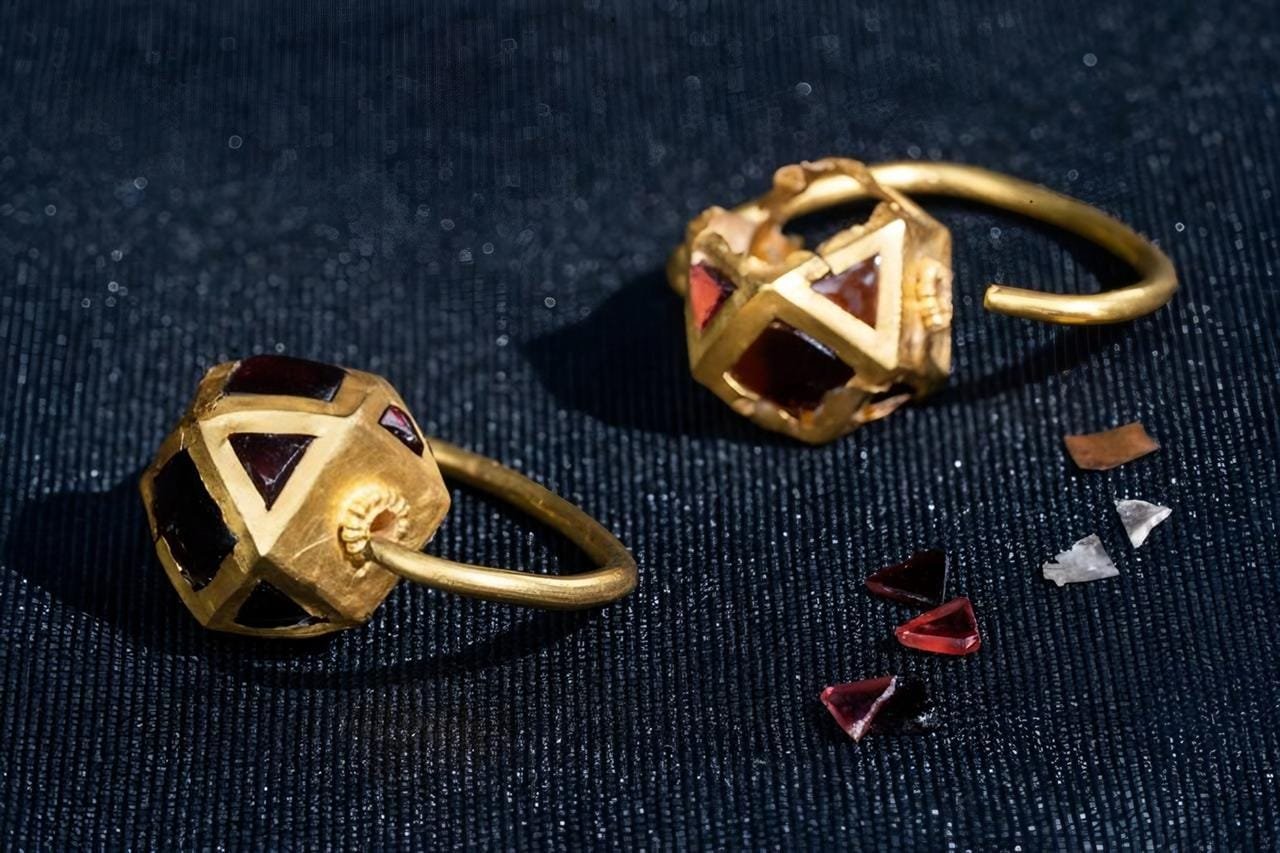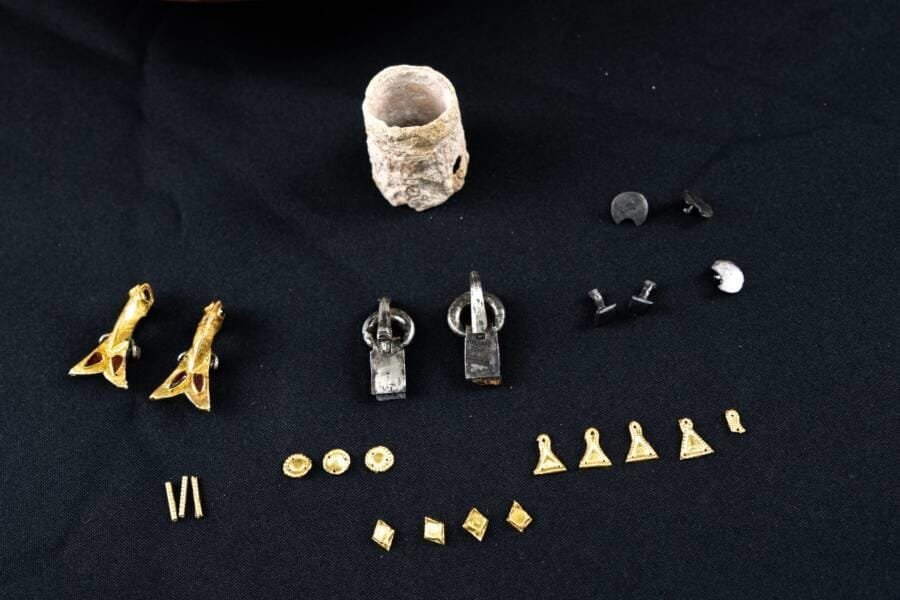Archaeological excavations at the Almalyk-Dere necropolis on the Mangup Plateau near Sevastopol, Crimea, have uncovered a stunning collection of gold and silver jewelry belonging to aristocratic women who lived in the region during the fourth to sixth centuries CE. This burial ground is believed to have been reserved for the elite.
 The recent discoveries include gold earrings adorned with inlays of a red stone, likely garnet or carnelian. Credit: Crimean Federal University
The recent discoveries include gold earrings adorned with inlays of a red stone, likely garnet or carnelian. Credit: Crimean Federal University
The recent discoveries, announced by Valery Naumenko, Acting Dean of the Faculty of History at V.I. Vernadsky Crimean Federal University, include gold earrings, brooches (fibulas), appliqué decorations, and belt and shoe buckles. Naumenko, who has been part of a team exploring previously untouched burial sites in the necropolis, remarked, “This burial ground presented surprises. Despite severe looting, the artifacts found are of independent scientific interest.”
The Mangup plateau, approximately 10 miles east of Sevastopol, has a long history of human occupation, with evidence of settlements dating back 5,000 years. During the early medieval period, it was part of Gothia, a Christian principality established by Ostrogoths who refused to follow Theodoric the Great’s campaign into Italy in 488 CE, as documented by Byzantine historian Procopius of Caesarea. The Almalyk-dere necropolis, the region’s largest early medieval burial site, has been central to understanding the social structure and culture of this principality.
Archaeologist Artur Nabokov of the Insтιтute of Archaeology of Crimea noted the craftsmanship and origin of the items, stating, “Most likely, rich women were buried in both crypts. The fibulas were likely made locally in Crimea, perhaps in Chersonesos or Bosporus, while the gold earrings were imported.” The earrings, featuring gold with inlays of garnet or carnelian, are particularly ornate and rare, highlighting the wealth and status of the individuals buried.
 The recent discoveries include gold earrings, brooches (fibulas), appliqué decorations, and belt and shoe buckles. Credit: Crimean Federal University
The recent discoveries include gold earrings, brooches (fibulas), appliqué decorations, and belt and shoe buckles. Credit: Crimean Federal University
One crypt also contained a “pyxis,” a cylindrical container crafted from animal horn, believed to have been used to store powdered cosmetics such as blush. The excellent preservation of the artifacts has allowed researchers to restore pieces like the crushed gold earrings.
The Mangup plateau is dominated by the Mangup Kale fortress, which dates back to the sixth century and was in use until the 15th century. Excavations in the area, which began in the 19th century and continue today, have revealed the plateau’s significance across multiple periods. Recent investigations have also included a Christian cave monastery from the 15th century and a Muslim necropolis on the Mazar-Tepe hill, used from the 16th to 19th centuries.
At the Southern Cave Monastery, archaeologists documented fresco compositions and conducted detailed geomorphological studies. Meanwhile, the Muslim burial ground revealed complex structures and stone enclosures, many of which remain intact.
The Mangup Archaeological Expedition, now in its 57th season, continues to explore the Almalyk-dere necropolis and surrounding sites, uncovering new layers of Crimea’s diverse history. The discoveries of this season further confirm that the necropolis served as a burial ground for the elite.
More information: Crimean Federal University





